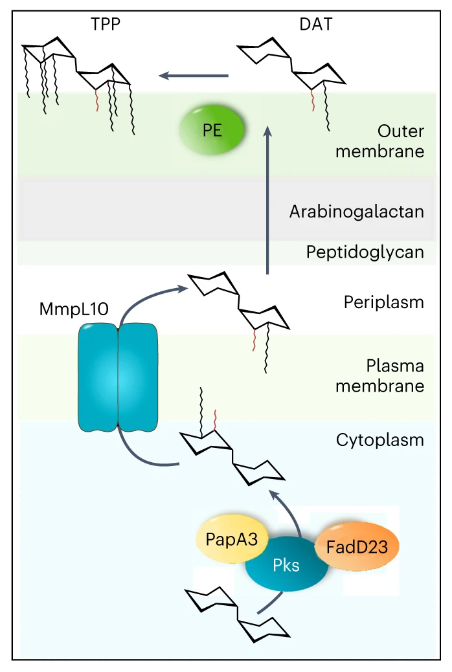
Proposed roles of Pks, PapA3, FadD23, MmpL10 and PE in the synthesis and transport of TPPs and DAT
Mycobacteriophages show promise as therapeutic agents for non-tuberculous mycobacterium infections. However, little is known about phage recognition of Mycobacterium cell surfaces or mechanisms of phage resistance.
A new study, led by Graham F. Hatfull from the University of Pittsburgh (USA) and Laurent Kremer from the Université de Montpellier (France) and published in Nature Microbiology, has shown that trehalose polyphleates (TPPs), high-molecular-weight, surface-exposed glycolipids found in some mycobacterial species, are required for the infection of Mycobacterium abscessus and Mycobacterium smegmatis by clinically useful phages BPs and Muddy.
They reported that:
- TPP loss leads to defects in adsorption and infection and confers resistance.
- Transposon mutagenesis show that TPP disruption is the primary mechanism for phage resistance.
- Spontaneous phage resistance occurs through TPP loss by mutation, and some M. abscessus clinical isolates are naturally phage-insensitive due to TPP synthesis gene mutations.
- Both BPs and Muddy become TPP-independent through single amino acid substitutions in their tail spike proteins, and M. abscessus mutants resistant to TPP-independent phages revealed additional resistance mechanisms.
Clinical use of BPs and Muddy TPP-independent mutants should preempt phage resistance caused by TPP loss.
Image Credits: Wetzel et al. Nat Microbiol (2023)
Targeting Phage Therapy 2024 will cover the latest findings on phage therapy. Stay tuned.
